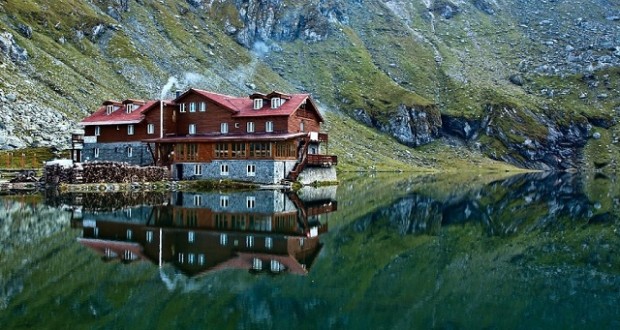When hearing about Romania, the first thing many people associate the country with Dracula, Bram Stoker’s immortal evil haunting and consuming locals in the night. As in many other vampire stories, there is a seed of truth in this one as well, because there was a Romanian leader called Vlad Tepes, also known as Vlad Dracul, who was an extremely violent leader, and a castle associated with him – the Bran Castle near the city of Brasov – is commonly referred to as Dracula’s Castle. It is a wonderful sight, worthy to be seen. But this article is about other things worth seeing in Romania, some outside the usual tourist routes.
-
The ice cave of Scarisoara
The Scarisoara Cave – Peștera Scărișoara in Romanian – is one of the largest ice caves in the Western Carpathians, and is considered one of the natural wonders in Romania. Located at an altitude of 1165 meters above sea level, and contains a glacier with a volume of 75,000 cubic meters. The temperatures of the cave never go above +1 degrees Celsius. The ice cave was formed over 3,500 years ago, during the glaciations.
The Scarisoara Cave has been declared a natural monument and a speleological reservation in Romania. Only certain portions of the cave are accessible for the public. The cave itself is only accessible by car or by bus, with no train routes going nearby.
-
The wild horses of the Danube delta
The Danube delta in itself is a great area to explore – it’s home to thousands of animal species, and is the second largest wetland in Europe. It has a remarkable feature, though, that’s rarely seen in the old continent – a population of feral horses inhabiting the Letea forest in the Tulcea county area.
Some sources speak about a population of around 1,500 animals, others estimate their numbers to be much higher, close to 3,500. Their ancestors were horses brought by the Tatar and left behind in the area 300 to 400 years ago, and their numbers were increased by the release of several horses by local peasants at the end of the cooperatives in the early 1990s.
-
Palace of the Parliament in Bucharest
One of the architectural wonders of the communist era, the Romanian Palace of Parliament is the largest civilian building with an administrative function, the most expensive administrative building and the heaviest building of the world.
It is an impressive work of engineering, designed by the architect Anca Petrescu at the age of 28. It was meant to be the political and administrative center of the Ceausescu regime, but failed to be completed before its fall. The building is now home to both houses or the Romanian Parliament, the National Museum of Contemporary Art and the Museum and Park of Totalitarianism and Socialist Realism, along with several other institutions. There are guided public tours of the palace, in several languages.
Romania is not just the country of Dracula – it has modern European cities with free WiFi in the streets (so you don’t have to suspend playing at your favorite mobile for a minute, and a rural part that keeps tradition alive.
 Living There
Living There



